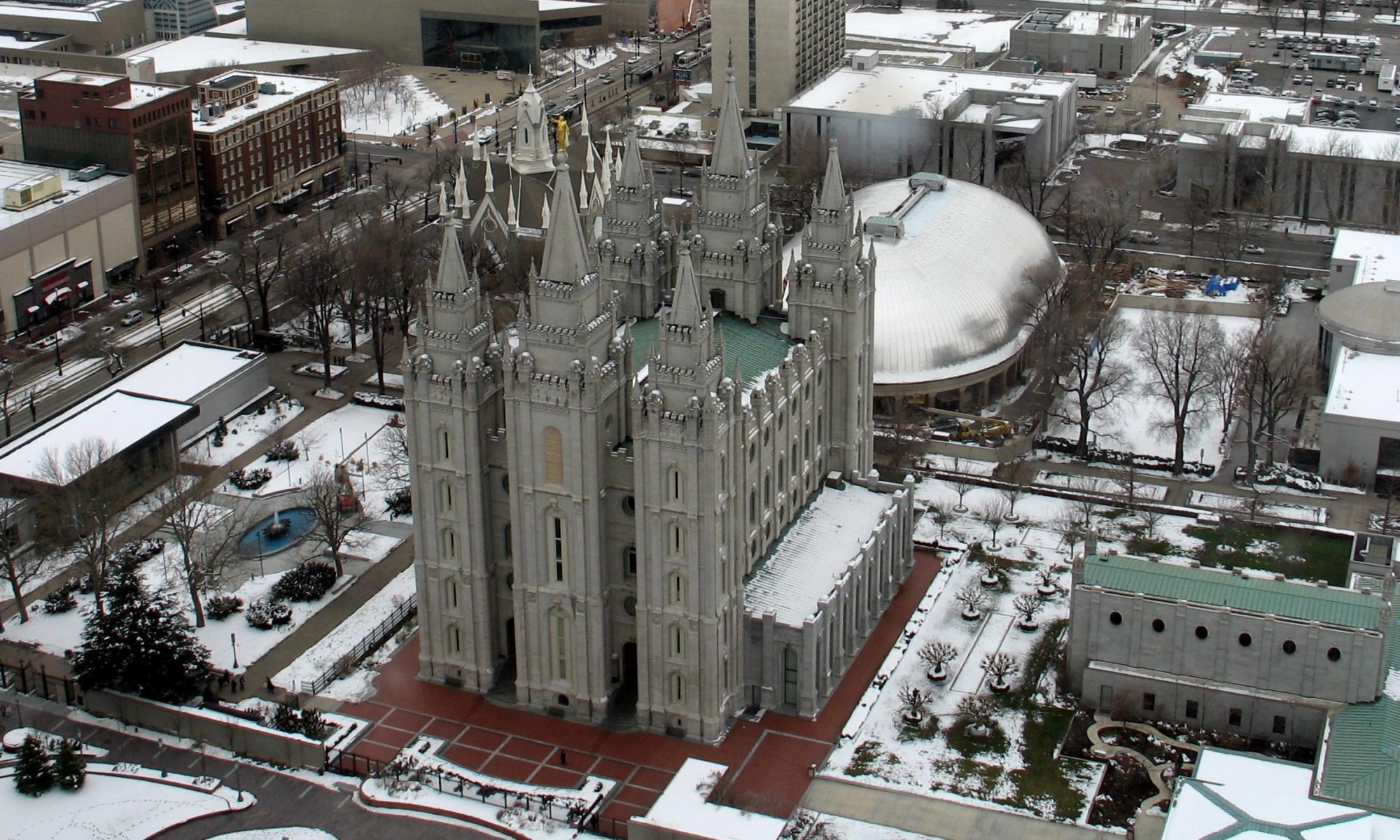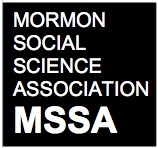Presentation:
Supply vs Demand or sociology – or why context matters
Authors:
Ronald Lawson
Rick Phillips
Ryan T. Cragun


Mormon Social Science Association
bringing social science to Mormonism
Presentation:
Supply vs Demand or sociology – or why context matters
Authors:
Ronald Lawson
Rick Phillips
Ryan T. Cragun
Michael McBride arranged for a panel of MSSA members to answer questions on By Common Consent, one of the most widely read Mormon-oriented blogs. You can see the first part of this discussion here.
MORMON MEDIA STUDIES INTEREST GROUP LISTSERVE:
INFORMATION AND INVITATION TO JOIN
The Mormon Media Studies Interest Group was formed 26 February 2009 by a group of faculty members in the Department of Communications at Brigham Young University. The group’s e-mail distribution list was launched 9 March 2009. It moved to a listserve format on 28 April 2009.
The group recognizes the centrality of the media to the Mormon experience, historically and in the present, and acknowledges the unique contribution that can be made to Mormon studies by focusing on media from a wide range of academic perspectives.
Specific objectives of the group include (but are not limited to) the following:
The interest group is just in its beginning stages. As we find our way, we may expand beyond the listserve format to a blog or some other means of communication.
If you are interested in participating in this community of scholars, we welcome you. Also, if you know of others who might be interested, please invite them first to assess their interest. To be added to the list, newcomers should send an e-mail to Sherry Baker (sherry_baker@byu.edu) with an indication of name and e-mail contact information.
Q: I will begin a PhD program soon on the subject of Mormon myth and sacred narrative. I wonder if I could be pointed toward any research which might have been done previously on the place of myth as stories with culturally formative power that might be categorized broadly under headings like Restoration, Revelation, Missionary Stories, and stories of healing and encouragement. These would include stories on the Pre-Existence/Pre-Mortal Life, the First Vision, the Westward Trek/Pioneer Narrative, The Plan of Salvation/Personal missionary narratives, etc. Any thoughts on previous studies that have touched on myth, story, narrative, or folklore in these areas would be appreciated.
A: We have two responses to this question. The first comes from Steven Olsen:
“My Masters paper at the University of Chicago (Anthropology, 1978) adapted a Levi-Straussian ‘structuralist’ approach to understand the cultural logic of the sacred Mormon narrative we call “The Joseph Smith Story.” A readable version of that study appears in a Dialogue article from the 1980s with the pretentious title, “Joseph Smith and the Structure of Mormon Identity.” This study will be of value to the extent that John is concerned about theory and method in his own study; it illustrates a conception and approach to the study of sacred narrative that, I believe, bears some fruit. There are certainly other possible approaches, including those used by Bert Wilson, Eric Eliason, Meg Brady, and others in their study of Mormon narrative, oral and written. From the perspective of what Clifford Geertz might call, if he were still alive, “History as a Cultural System,” there are a couple of obscure articles that may be helpful, “The Theology of Memory: Mormon Historical Consciousness” in a recent FARMS Review and “Historic Sites as Institutional Memory,” in the proceedings of a BYU symposium several years ago, both of which were written by me. Additionally, at an ASCH conference a few years ago, Stephen Stein delivered what I remember as a masterful set of preliminary reflections on the implications of Mormonism’s being a literate religion, i.e., one that is grounded in the authority of written documents, some of which record historical experience. I have never seen it in print, but he would advance our understanding of Mormonism considerably if he would do so.”
Armand Mauss also wrote a response:
“If you are in Utah, you are located right in the center of the best collections of Mormon myth and folklore in the world at the three major universities in Utah. He should start by consulting the massive bibliography compiled a decade ago by James B. Allen, Ronald W. Walker, and David L. Whittaker (editors and compilers), STUDIES IN MORMON HISTORY, 1830 – 1997 (University of Illinois Press, 2000), which will be found in the reference section of any decent library, especially in Utah. In that bibliography will be found numerous sections devoted to myth and folklore, especially on pages 651-654, 799-800, and 1095-1096. The founder and earliest collector of Mormon myth and folklore was the late Austin Fife (often with his wife Alta), so John might begin by browsing through Fife’s work, which appears in a couple of books and numerous articles. Fife’s successor would be William A. (“Bert”) Wilson, still very much alive as English professor emeritus at BYU, and author of many great articles. An up-and-coming younger scholar specializing in Mormon myth and folklore is Eric Eliason, also in the BYU English Dept. Morehead would do well to seek out Wilson and Eliason for interviews. They would give him a lot of useful guidance, not only bibliographical but also methodological. But John should do considerable browsing through the work listed in the above-mentioned bibliography before seeking out Wilson or Eliason.”
Update: Mon, 2009-04-13 10:10 — Shawn Bennion
I would also suggest contacting Eric Eliason, who has an interest in Mormon Folklore. I recall his comment that the category of “3 Nephite” Stories is among the largest in all of the study of folklore. The L. Tom Perry Special Collections at BYU has a large collection of Mormon folklore, often containing transcripts of interviews.
Q: I wonder if you might have some thoughts on something. I’m beginning graduate school in religious studies and am looking at ways to raise funds for my research degree on Mormonism, Mormon sacred narratives, and their place in Mormon-evangelical dialogue. I am aware of the Fellowship Applications for visiting faculty through the Tanner Humanities Center, but do you have any suggestions as to possible funding, scholarship, or fellowship sources for a scholar looking to earn a PhD through research and a dissertation that adds something unique to Mormon studies and interreligious?
A: Here is Armand Mauss’s response:
“This is a tough one. The Tanner Humanities Center would be a likely source, perhaps next year if this year’s application deadline has passed. I don’t know how Tanner or other potential funding sources would feel about awarding fellowships for “long distance” degree programs, as contrasted with the normal residential expectations. For the Mormon-Evangelical relationship specifically, you should talk to Robert Millet (Religion, BYU), who is the most prominent Mormon scholar with an interest in that relationship. Millet (like Davies) is also a friend of Richard Mouw at the Fuller Seminary in Pasadena, and Mouw himself might well have some ideas about funding sources, given his interest in the Mormon-Evangelical dialogue.”
I do know that the rules against alcohol are a bit stricter in the AUB/Allred group. I know of a few patriarchs who have a glass of wine after dinner, but these are not in good favor with the Brethren who often restrict its use publicly. Yet, on one occasion a beer or two might be tolerated to ease the tensions before sex or after work. I gathered this material during a priesthood meeting in Pinesdale. It is obvious that fundamentalists do not recognize as strict an interpretation as orthodox Mormons do.
Thus, the FLDS and other polygamist groups do have slightly more relaxed norms toward alcohol use. Carrie Miles offers a suggestion for why this might be the case and offers some additional information:
Carrie’s suggestion that the fundamentalist Mormons look more like primitive Mormonism than does the LDS Church does reflect the much looser observation of the Word of Wisdom among Mormons prior to the 1900s. Joseph Smith was known to have consumed alcohol on occasion and Brigham Young ran a prominent bar in SLC, though not because he was a regular imbiber but to control the flow of alcohol. Thomas Alexander offers another explanation for the changing adherence of the Word of Wisdom among earlier Mormons:
Rick Phillips offers some additional information on this topic:
The Tanner Humanities Center is pleased to announce it has been awarded a grant from the George S. and Dolores Doré Eccles Foundation for $36,000 to establish the Eccles Fellowship in Mormon Studies. The award has been designated to support two doctoral students in researching and writing their dissertations ($18,000 stipend for each), one in 2009 and one in 2010. This fellowship targets Ph.D. candidates across the United States and the world who are researching the Church of Jesus Christ of Latter-day Saints, its members, and Mormon culture in the fields of History, Anthropology, Sociology, Education, Economics, Business, Political Science, Religion, or Literature. Through publications, work in the classroom, and in public forums, these future academics, writers, and teachers will have an impact on the study of Mormonism and on students and the general population.
This fellowship is the first in the United States and the world to focus specifically on Mormon Studies. In offering this opportunity at the University of Utah, the Center recognizes the important and unrivaled archival resources for research located in Salt Lake City and Utah. It also begins to redress the imbalance of opportunities facing those who choose to study Mormonism as opposed to Judaism, Catholicism, or Islam. This fellowship will also enhance the recent trend that seeks to raise Mormon Studies to a new standard of academic excellence.
For application forms and requirements please visit http://www.thc.utah.edu
For more information, see the Salt Lake Tribune’s article on the fellowship.